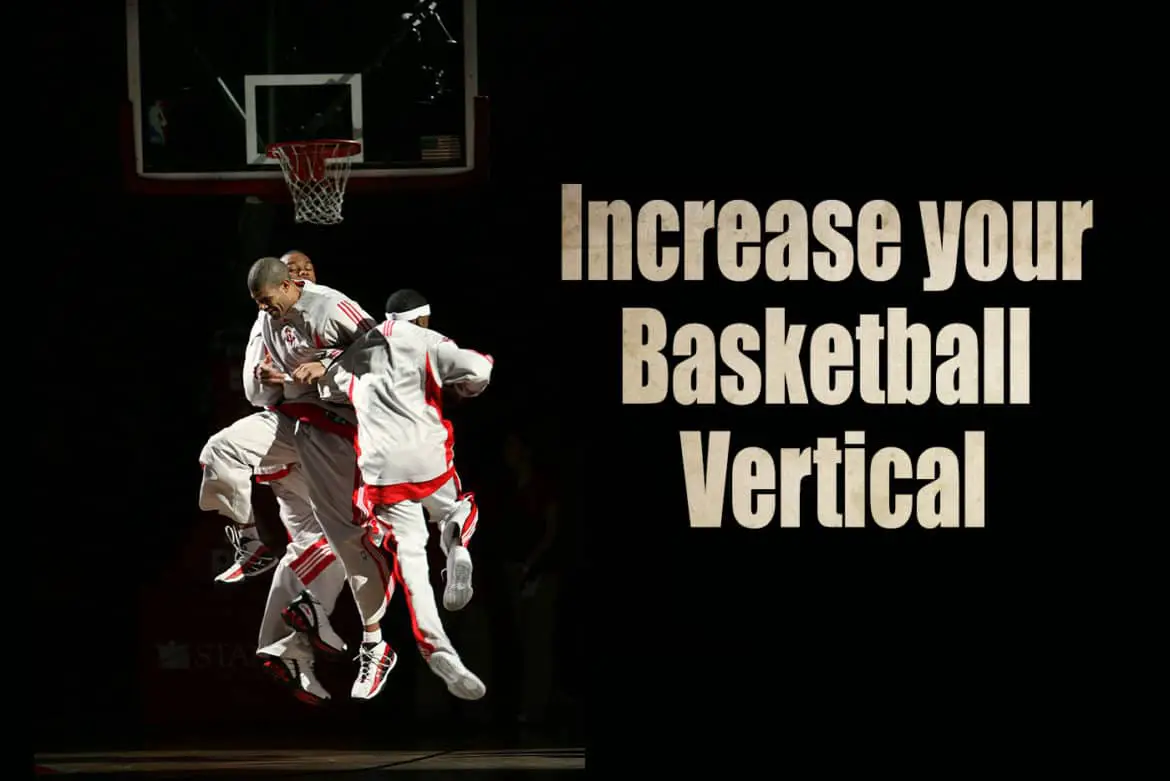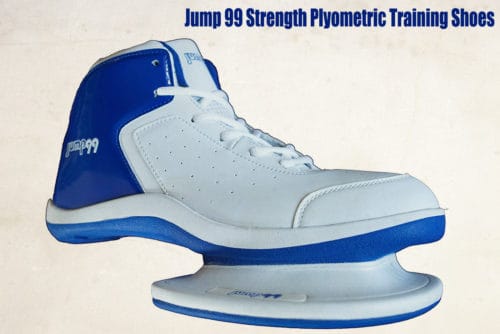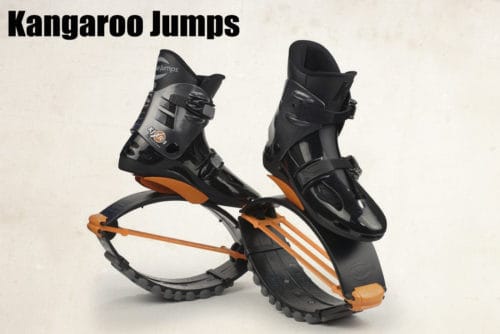Jump Higher In Basketball (and everywhere) With These Great Tips
Do you have a love for basketball and want to improve as a player? Is jumping to great heights an aspiration for you? Well if so, then we suggest you give this article a read. The article covers the fundamentals of jumping higher for basketball and can be helpful for anyone who wants to be better at jumping in general.
White Boys Can’t Jump!
My passion as a 13 to 22-year-old was virtually nothing but basketball. Without even trying, I was able to out-dribble and outscore everyone in my 7th-grade gym class (including the captain of the school basketball team), and the coach asked me to play – when I didn’t even know we had a team!!! Since then, I’ve tried everything to increase my vertical jump including playing varsity volleyball in the off-season, sprint-training and even trying to make my own custom insoles with a spring-lever to catapult my jump!
That didn’t work by the way! So, you can see that I have a special vested interest in this subject which has been so near and dear to my heart! I was able to progress enough that I could dunk (but only on occasion and in warm-ups) but remember, I’m a 5’10” white boy from Ukraine with not a single athletic gene in my entire family history. Talk about strikes against me!!
Can’t I Just Workout My Thighs? Those are my Jumping Muscles Right?
NO! Well, yes, you can, but before you do, it’s really important that you understand there are two basic types of muscle you’ll be exercising. I can get really technical, but I doubt you want to read all that so let’s make it super simple.
1 – SLOW twitch muscle – this is the type of muscle that bodybuilders most often work on. It is exercised by (for example) putting lots of weight on your shoulders and then doing squats. Your movements are slow and they include lots of weight. This makes your legs strong so you can pull a car! Another example (though different) is a marathon runner. His/her legs are very strong for the purpose of lasting for hours in a non-stop athletic endeavor. However, strong slow-twitch muscle does absolutely NOTHING to help you jump higher!
2 – FAST twitch muscle – This type of muscle is used for bursts of very short but very intense use. A great example would be a 100-meter sprinter (fast-twitch) vs. the aforementioned marathon runner (slow twitch). If you want to jump higher, only fast-twitch muscle is of any use to you!
Now that you know the difference, it’s crucial that you workout your fast-twitch muscle with exercises that focus on those muscles only.
Building Your Legs
There is one surefire way to be able to start jumping higher, and that is to make your legs stronger to start with. Trying to jump off of “fish legs” (weak legs) is like trying to see without eyes. It is impossible (unless you make use of echolocation but let us just ignore that for the point of this article). There are plenty of ways to build your leg muscles and get you ready for jumping higher. Let’s start with the basics.
Training Workouts
Plyometric:
Jump training, also sometimes referred to as plyometric is a key workout style for people who long to jump higher than ever before. The routines focus on, you guessed it, jumping while focusing on fast-twitch muscle enhancement. Throughout the workout, you will be focusing on many different types of squats, lunges and twists all of which have some sort of jump involved. For example, jump squats, where you do a regular squat and then power into a jump out of it.
The great thing about a plyometric workout is that you can usually get away without needing any extra weights. This makes them easy to do anywhere (as long as there is a bit of space of course). There are hundreds of plyometric workout routines available online. One of the best is the P90X plyometric workout. If you attempt this, prepare to have sore legs for a few days after for the first few weeks. Try to do at least one routine a week. Plyometric is a practice makes perfect method and will prepare your legs and joints to fly through the air, and safely land without strain.
When I was but a young lad, I had to walk to school uphill both ways, in the snow, and I …. okay fine then! Actually, when I was young, no actual jumping aids existed (at least not that I knew of since they were not in most stores and there was no internet!). My basketball buddy found a rudimentary pair of plyometric shoes (not sure how) and to make a long story short, in 3 months, he moved from a vertical leap that was a full 6″ less than mine, to a full 5″ higher than mine!
That was frustrating for me, but alas, his shoe size was much smaller than mine, so no shoe-sharing! Plyometric shoes are just one of the great options for training. I’ve laid out a few other awesome options right here! MAN, do I ever wish this existed back in 1963 when I was in …. just kidding! More like 1990 when I was a senior in high school!
Jump 99 Strength Plyometric Training Shoes
Pseudois Vertical Jump Trainer
JumpSoles (similar to the Jump 99)
Kangaroo Jumps (okay, full disclosure – I thought this was a joke, but after some research, I can see that it would be fun and helpful. I could dunk for sure with these the first time I put them on!)
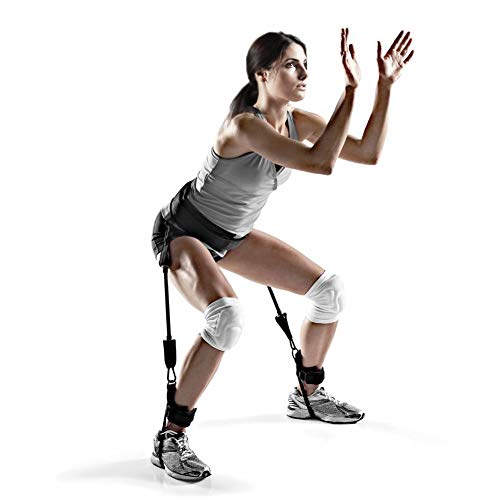
Body Building Workout:
The typical way to build leg muscles is via a regular bodybuilding leg workout. These usually consist of weighted exercise. Look online for leg workouts and a huge amount of varying workouts will appear. They most often included weighted front squats, back squats, leg extensions, calve raises, and deadlifts. These are surefire exercises to add muscle mass and in turn make you able to jump higher. Remember, I did say that body-building routines typically are useless for fast-twitch fibers (muscle fibers) but it’s actually not a bad idea to incorporate some exercises to focus on slow-twitch throughout your greater routine. There is no formula, but if I had to make a judgment, I’d say no more than 25% focus on slow-twitch workouts. Do at least 75% fast twitch exercises including actual jumps and other explosive, quick bursts of exertion for your thighs.
Body Weight
Jumping has a lot to do with your power to weight ratio. That simply means the ratio of how heavy you are, and the power your legs can produce. You could have the strongest legs in the world, but if you weigh 400 pounds, it would still be a struggle to jump. The same is true the opposite way around, if you are light, but have weak legs, you still will struggle to jump high. It is important to find a healthy middle-ground for you as an individual. If you are already skinny, it is recommended to focus on the bodybuilding style of working out. This will help you pack on the most amount of muscle possible. If you are on the hefty side, try doing more plyometric workouts as it burns a ton of calories and fat, which in turn will make you lighter while building your legs. Thus increasing your power to weight ratio.
Nutrition
Training to jump higher (as with any working out) will require a good nutrition plan that is tailored to you and your body type. Be sure that your diet is low in fat and high in protein. Carbohydrates are also okay as they are a great source of energy. For skinny people, eats lots of calories to support your muscle growth. For people on the larger side, try to limit your caloric intake to what is recommended by a calorie calculator online. This will allow you to safely burn off the extra weight while still providing the nutrients that your body needs for muscle growth.
Jumping Technique
Jumping is as much about technique as it is anything else. You may be incredibly strong and have a great power to weight ratio, but if you cannot make your body work using proper technique, then you probably will not be able to jump very high.
Vertical Jump:
Vertical jumping is a relatively simple technique to master. Start with your feet firmly planted shoulder-width apart. Bend into a squat and then push as hard off of the ground with your legs to quickly throw yourself into the air. The trick is to be standing up as straight as possible right before you take off and leave the ground from your toes. This outstretched position will allow for more force to be transferred to the ground, increasing your jump height. You will also want to throw your arms up as you start the jump, making them stretch out fully above your head.
Running Vertical Jump:
This is very similar to the normal vertical jump except you are propelling yourself forward as well as up thanks to your forward momentum. Start by running up to the spot that you want to take off from. Plant both feet at the same time and follow your vertical jump technique to propel you into the air. Your run and jump should occur in a smooth transition.
Okay, I’m learning to jump higher, but do you have anything else for me?
I’m glad you asked! I have lots more! Read on!
There are few things better in the game of basketball than a rim-rattling slam dunk! If you want to turn heads and enter the realm of basketball’s elite, you should learn how to dunk a basketball. There are many different factors that will make up your ability to throw down a dunk. The most obvious features of improved dunking ability are leg strength and jump practice, but many other things will help you jump higher as well such as flexibility, body composition, ab and upper body strength, nutrition, and sleep. Depending on age, leg strength is usually best improved by doing heavy weight exercises such as leg press, squats, deadlifts, hamstring curls, and calf raises.
This is to build a base from which you can apply the plyometric exercises you read about earlier. When you are using weights to train your strength, it is very important that you monitor the weight you use and try to improve it with every workout. By the way, in case it’s not obvious, please use common sense not only when designing a workout routine, but also when establishing realistic expectations. If you’re a skinny little 9-year old who’s never done anything physical other than flick an X-Box joystick, you’re not going to dunk on a 10-foot rim anytime soon no matter how many exercises you do. Temper your expectations and you won’t be disappointed with your progress.
In order to dunk better, you need to practice dunking, and specifically jumping. There are many ways to practice jumping, arguably the best being simply attempting a bunch of dunks. However, you can also do things such as box jumps that feature a tangible goal to train yourself with. Like weight training, try to pick jumping or sprinting exercises that have a height or time that you can measure, monitor, and improve upon.
More Plyometric Options!
I outlined some plyometric jumping options earlier in the article, but I think there’s a real value in giving you lots of options! Here’s a is a sample workout to get you started with a simple wood which is super cheap to make, but it does take a tiny bit of time and skill. It’s an option overusing some of the plyometric aids outlined earlier.
Try Box Jumps
- 3 sets of 8 Box Jumps, (Once again, try to increase the height of the box every week or two)
- 3 sets of 8 Side to Side Box Jumps
- 3 sets of 8 Depth Jumps, (Jump off a box and then immediately jump off the ground and try to touch something)
- 3 sets of 8 Med ball backboard touches, (take a somewhat heavy medicine ball and try to jump up and touch the backboard with it)
- 3 sets of 8 Sprints (simply sprint as hard as you possibly can the entire length of the court)
You will get more out of this if you bring along a friend to time you while you run?
While doing these workouts, keep in mind that the main focus of this guide is to record your progress, if you have a tangible goal in mind with each little step along the way to dunking a basketball, you will be able to dunk much sooner. If you sprint the length of the court in 8 seconds one day, push yourself to do it in 7. You will be amazed at how quickly your jumping improves once you get the hang of chasing goals for every little exercise you do.
Next, you will need to become flexible to keep your legs from injury and to increase your range of motion with your jumps. In order to improve your flexibility you will need to do a lot of stretching, but which stretches are the most important? In order to jump high, you will need to have really flexible hips. In order to stretch your hips, you can try leaning into a lunge or doing a classic butterfly stretch. It is also recommended to do hamstring stretches, (simple toe touch), quad stretch, calf stretch, and glute stretch. I recommend holding each stretch for 15 seconds and resting for 5 seconds between sets of stretches.
This routine is great to do after working out and before bed. Especially remember to do this stretch routine the night before you plan on doing a dunk session! To further improve your flexibility, try to look into some yoga routines as this will drastically improve your flexibility and core strength.
Use a Proven System!
Here is definitely the easiest way to a successful answer to your jumping woes, but it’s not a cakewalk. You still have to work at it. Check out the photo (linked) or click HERE to find out more.
Body Style
Body composition is obviously one of the most important factors that will allow you to jump higher, if you look at NBA players they are very, very rarely big, bulky guys. Having a low body fat percentage will allow you to carry less unnecessary weight, resulting in higher jumps and louder dunks. In order to lower your body composition, you really need to watch what you eat. The next time you think about having a burger or some fast food, prioritize your goals and decide that your dunking goals are more important than fatty food. If you drink a lot of water you will also feel overall much better and have more energy for training sessions and everything in general.
There are a lot of little tips and tricks to the trade that you can pick up to expedite your journey to dunking a basketball. If you learn how to palm the ball (or more specifically, if you’re blessed with long fingers), you will make up for a lack of jumping prowess by having a firm grip on the ball. Another great tip for learning to dunk better is to improve your jumping form. This can be very confusing, so I am going to leave you with a simple little tip to think about when you jump.
As soon as you plant the foot opposite that you jump off of, (if you are left-handed you jump off of your right foot), try to plant the other leg and jump in a rhythmic 1-2 motion. Think of it like two rapid steps so that you can quickly transfer power into your jump. Additionally, try to ramp up the speed of your sprint into the jump instead of going top speed the entire time into your jump. By this I mean, take a little hesitation step and then go from slow to fast as you take off into a jump.
Visualize for Success
A great way to improve your dunking skills is to watch from the best and visualize yourself becoming on their level. One of the things I learned as a collegiate ballplayer is that there is some indisputable research proving that visualizing yourself doing something that is difficult but actually attainable, will get you closer to that goal. It really HELPS! The caveat to that is that you need to visualize your form properly. Don’t visualize yourself flying across the gym with dragon wings. We’re not talking about fantasy here! Instead, visualize a normal take-off, but this time with an especially hard effort and a bit of adrenaline. That’s more realistic and attainable.
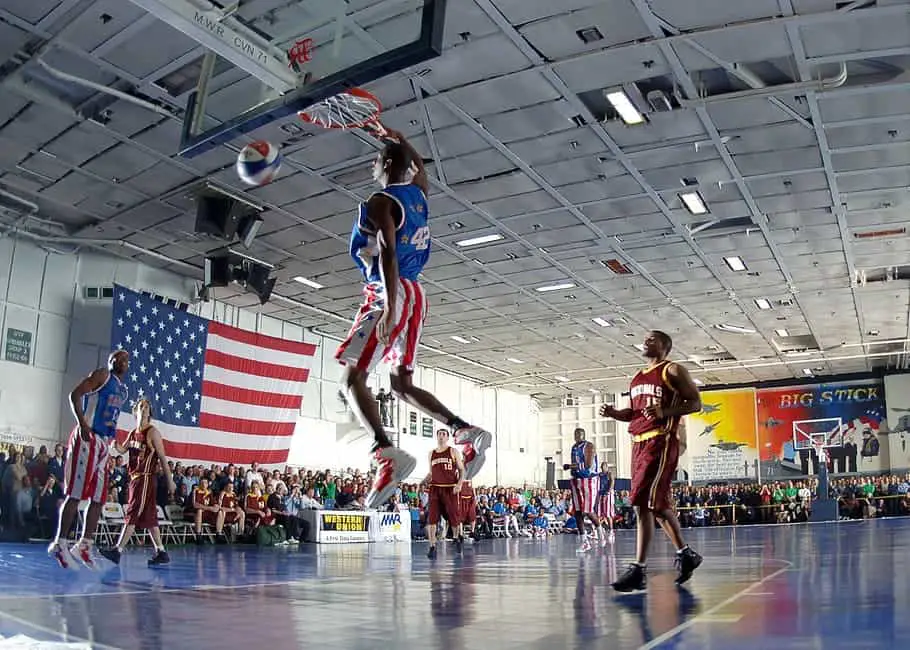
Try doing a youtube search with team flight brothers videos and various NBA dunk highlights. This will give you the inspiration to complete your workouts, follow your diets, and overall stick to the gameplan. In addition, these videos will help you visualize what you are trying to do and will ultimately help you achieve your goals. When you are getting ready to jump imagine that you are your favorite player and try to imitate the dunk you saw them perform.
Lastly, do not let old, worn-out shoes stop you from your dunking dreams! The pair of running or basketball shoes that you are wearing will have a pretty massive effect on the transfer of power from your body to the floor, and also the weight on your feet.
If you are a six-foot-nine, two hundred fifty-something-pound monster like Lebron James, it will not matter what pair of shoes you are wearing, however, if you are like most of us, you will want to have a light pair of shoes to jump with. There is also a little bit of research developing in the basketball community that wearing leg sleeves or compression tights will help accumulate heat in your legs and warm them up for explosive jumps faster.
Compression tights have been known forever to be great for reducing the time it takes to recover from workouts. There is also a company called Athletic Propulsion Labs (APL) which offers a shoe that is scientifically designed to increase your vertical leap.
If I were REALLY serious about my goal, I would buy a nice pair of APL’s that are NOT basketball shoes (or at least not my game shoes) for use in practice. They’ll be lighter and they’ll serve not only to encourage you in your training process but also serve as pretty darn nice shoes overall for a variety of athletic endeavors. HERE’S A GREAT PAIR to start your research.

Final Thoughts (almost)
Overall, when you are training yourself to dunk a basketball, you are training your explosion! Make sure you do every rep of every set of every exercise with as much power, speed, and intensity that you possibly can to train your nervous system and muscles to recruit power as quickly as possible to transfer into an explosive jump and resulting dunk! Another important thing to remember when training your dunking skills that can be surprisingly hard to implement is that you cannot overtrain!
It may be tempting to spend a couple of hours attempting hundreds of dunks, but this will beat down your knees and cause you to have a really slow recovery. You need to practice with moderation, this means that you will really start seeing results once you maximize the focus and intensity of the workout time that you have. Good luck with your training! I hope this guide helps get you on track to take flight and throw down a thunderous dunk!
Also, remember that you will almost always jump higher off of two feet than one. There are times when one-footed jumps are needed so practice both. If you are finding it hard to get into your own jump training schedule, try finding one online that is specific to becoming a better jumper. There are many programs out there designed specifically for basketball players so that could be your best option. Also, watch technique videos from pro basketball players to get a good visual representation of what you are trying to achieve. Practice makes perfect so get out there and start jumping.
The Best Basketball Training System We’ve Found!
I’m guessing you’re reading this article because you’re looking to up your ball game! I have lots of experience with basketball having played college basketball in Iowa (Emmaus Bible College) and spent much of my life developing skills. After much research, I’ve come across a training system that I think quite highly of. It is definitely worth the money if you’d like to gain an advantage over a competitor to the extent that you would not be able to without the course. Just click this link to find out more! Happy Balling!

